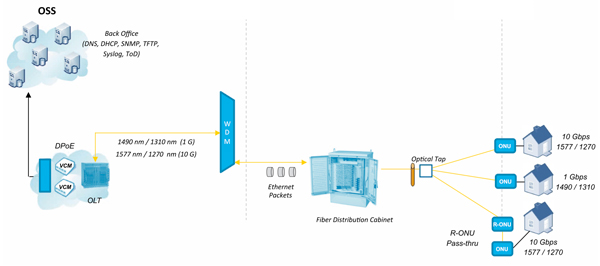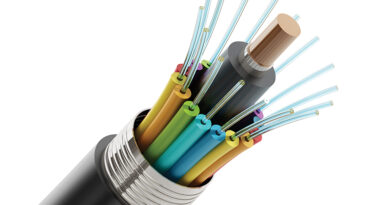EPON — An All Fiber Access Network
By Steven Harris
In the late 1990s of computer networking most cable professionals will recall learning about a new upcoming protocol called Ethernet. At the time, cable professionals were educated about Ethernet through a widespread information technology professional certification called the CCNA 640-407. This credential was the most sought-after at the time, debuting at the Philadelphia Networker show in 1998. Today the CCNA program is still prevalent at the SCTE•ISBE providing Ethernet knowledge.
The Ethernet protocol was invented 44 years ago by Dr. Robert Metcalfe, of Xerox Palo Alto Research Center, PARC. In the days before Ethernet adoption there were early connected devices using AppleTalk, while mainframes were using the Token Ring protocol for communication. Today, Ethernet is the most widely used layer 2 communication protocol in cable networks, maintained by the IEEE. Ethernet is deployed in small / medium commercial cable networks, Carrier Ethernet networks, customer premises, and now making its way into our access networks. The focus of the rest of the article is how Ethernet is transforming the access network providing our cable subscribers connectivity via a passive optical network (PON) that uses IEEE Ethernet frames. PONs that use the Ethernet protocol are called Ethernet passive optical networks or EPONs.
EPON leverages an all-fiber optic transport system and signaling architecture called an optical distribution network or ODN. The ODN is used in place of our traditional HFC network. EPON supports symmetrical services of 1, 10 and soon 100 gigabit connectivity, providing up to 99.99% availability over a 20 km distance or more. The ODN requires significantly less power than an HFC network. EPON architectures offer long term CapEx and OpEx savings for operators. EPON paves the road for next generation services such as 4k 802.11ac and 802.11ax robust business Internet services and connectivity for IoT.

EPON is a fiber to the x (FTTx) ODN as it uses the dynamic bandwidth algorithm (DBA) and multipoint control protocol (MPCP) to establish connectivity. EPON provides flexible architectures such as FTTc, FTTb, FTTm and FTTp. Each of these FTTx architectures provides a scalable point to multipoint (PtMP) gigabit solution for operators to connect subscribers. The EPON connection starts at the cable operator’s headend with optical line terminations (OLT), similar to the DOCSIS CMTS. In the field the EPON architecture uses optical CPE, known as optical network units (ONU) that connect to optical taps. The ONU replaces the traditional DOCSIS cable modem. The OLT and ONU use the ODN to communicate and connect with one another. Similarly, EPON is used in conjunction with SCTE•ISBE 174 RFoG networks, where the Ethernet ONU will connect to an RFoG ONU providing the same optical connectivity over different optical wavelengths. RFoG allows RF devices like a STB at the premises to connect to a cable network.
Rolling out a new access network technology typically means major changes in the back office or NOC, migrating to support a new protocol like Ethernet. The cable operator community, CableLabs, vendors and SCTE•ISBE worked together towards the development of a specification that allows operators to leverage their back office for EPON provisioning. The released specification is called DOCSIS provisioning of EPON or DPoE. DPoE works with existing OSS provisioning servers, making the ONU in the field behave similar to a DOCSIS modem.
The access network continues to gain a great deal of attention as we see operators invest in innovative technologies. EPON is a differentiating architecture in the access network that will allow cable to win the competitive battle. EPON will provide access well into the future and many long-term advantages for cable operators. SCTE•ISBE has remained lockstep with our industry partners, bringing our members the latest resources and training. Learn more at http://www.scte.org/fttx.
 Steven Harris
Steven Harris
Senior Director, Advanced Network Technology and Instruction, Learning and Development, SCTE/ISBE
Steve Harris is the senior director of advanced network technology and instruction at SCTE/ISBE. He is a respected international telecommunications subject matter expert, sought-after presenter and principle instructor. He is responsible for the tremendous growth of SCTE/ISBE training programs and certifications for over a 100,000 telecommunication professionals. He also has responsibility for the client partnership in the SCTE/ISBE Corporate Alliance Program for MSOs and vendors.
Credit: SCTE•ISBE




